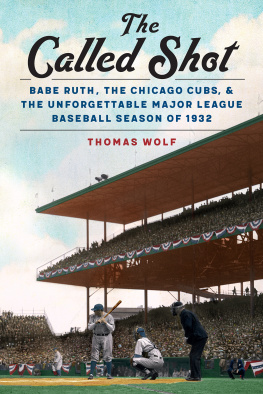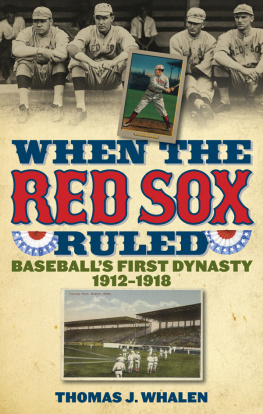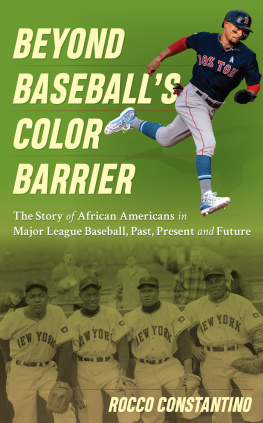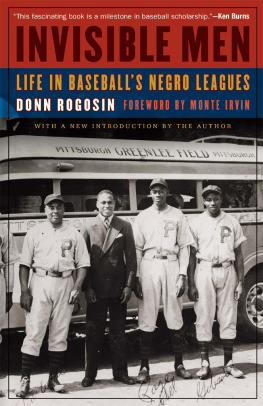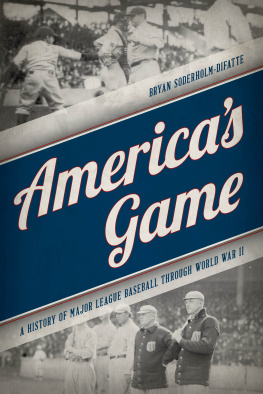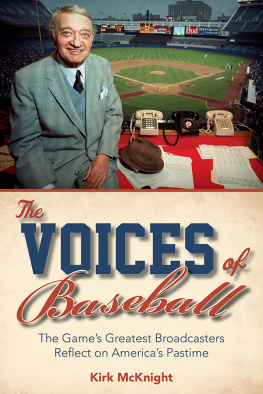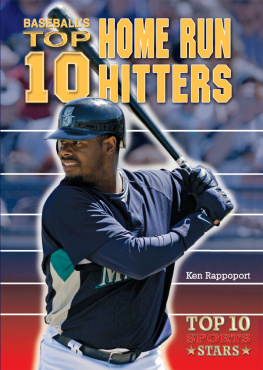
The one and only George Herman Babe Ruth. Though Ruth did manage a dramatic three-home-run game at Pittsburghs Forbes Field in his final season playing for the Boston Braves, his remarkable career ended on May 30 in Philadelphias Shibe Park. Babes final at-bat resulted in a weak groundball to first baseman Dolph Camilli. After missing a ball hit by Lou Chiozza, Ruth took himself out of the Memorial Day twinbill. He never played again.
COURTESY OF THE NATIONAL BASEBALL HALL OF FAME LIBRARY
T he final swing of the games greatest player did not result in a long, soaring home run. There was none of the mincing majesty of a Ruthian trot around the bases or even the extraordinary drama of a mighty whiff from the Sultan of Swat.
No home run that Babe Ruth ever hit managed to hint at the energy, power, effort, and sincerity of purpose that went into a swing as much as one strikeout, Paul Gallico once wrote. Just as when he connected the result was the most perfect thing of its kind, a ball whacked so high, wide, and handsome that no stadium in the entire country could contain it, so was his strikeout the absolute acme of frustration. He would swing himself twice around until his legs were braided. Often he would twist himself clear off his feet. If he had ever connected with that one.
There was none of that here. When Babe Ruth came to bat for the 8,399th and final time of his magnificent career, he was, finally, harmless. The Braves aging slugger had an aching knee, the result of an embarrassing fall on the left field incline at Cincinnatis Crosley Field a few days earlier.
What hurt just as much, perhaps, was Ruths unsightly.183 batting average with just six home runs in the teams first 27 games. It was a sad way for the games greatest home-run king to wind up. Everyone around the game knew he was done. Ruths teammate on the Braves, 19-year-old rookie Albie Fletcher, watched with sadness.
He couldnt run, he couldnt bend down for a ball, Fletcher told Donald Honig in his book Baseball America. And of course, he couldnt hit the way he used to. It was sad watching those great skills fading away. To see it happening to Babe Ruth, to see Babe Ruth struggling on a ballfield, well, you realize that were mortal and nothing lasts forever. A contemporary of Ruths, Hall of Fame third baseman Fred Lindstrom, put it even more plainly: It was like watching a monument beginning to shake and crack, he said. You know, when I think back on it, it was an awful thing to see.
So here he was, stepping into the batters box in the first game of a Memorial Day doubleheader at Philadelphias Baker Bowl, the stands barely half-full. Ruth looked out at the guy on the mound, a guy about as nondescript as it gets. He saw a 26-year-old rookie right-hander named Jim Bivin, who finished 2-9 in this, his only big-league season, allowing 220 hits in 162 innings of work. When Ruth came up with two outs and nobody on in the first, a roar, of course, went up from the crowd. It was Babe Ruth, after all. Ruth swung mightily and topped a slow roller to first baseman Dolph Camilli.
Running down to first, he felt the pain in his knee from his fall at Crosley Field. But he trotted out to left field, to try to make a go of it. The doubleheader had just started. There might be some kid who hadnt gotten there yet. As he trotted to left, he had to be thinking about when he should have quit, when he really wanted to, about a week earlier. He knew how he should have gone out. Nobody ever had a greater sense of the dramatic than Babe Ruth.
Who hit the first All-Star Game home run? Who hit the first home run in Yankee Stadium? Who hit a home run the first time he walked up to the plate wearing his famous number 3? What about his called shot in the 1932 World Series, whether he did it or not? Was there another player in baseball history who might even have dared do such a thing? And, Ruth thought, he had the perfect finish. He blew it.
Just five days earlier, Ruth had one of the finest games of his remarkable 22-year romp through the big leagues, swatting three home runs against the Pittsburgh Pirates. That included an extraordinary parting shotthe 714th of his careera belt that cleared the entire stadium, the first fair ball ever hit over the right field roof at Forbes Field. Ruth left that game to a thunderous ovation. Why the hell didnt he keep on walking?
Former Red Sox outfielder Duffy Lewis, the Braves traveling secretary, told the Babe right after that home run that he should quit and go out on top. Ruths wife, Claire, told him the same thing. But Braves president Emil Fuchs, dangling the possibility of a managerial position over Ruths head, lured him back. There are people who want to see you, Babe, hed tell him. He knew how badly Ruth wanted to be a big-league manager. And he knew his Braves, the worst team in baseball history, were an even worse draw without a fading Babe Ruth. Ruth had already threatened retirement two weeks before that magnificent day in Pittsburgh.
On May 12, with his average at a sickly.154 with only three home runs in 21 games, Ruth told Fuchs what he already knewthat he was washed up and wanted out right then and there. Fuchs insisted that Ruth go on the teams upcoming road trips to Pittsburgh, Cincinnati, and Philadelphia, all National League cities that were planning Babe Ruth Days for the former American League star. According to Fuchs, theyd already sold a lot of tickets. Since Ruth, a career American Leaguer, had never played in National League cities Pittsburgh or Cincinnati during the regular season, reluctantly, he agreed to make the trip.
But now, his knee aching, his batting average below.200, he knew it was a bad idea. Just like leaving New York.
When, in 1935, the New York Yankees dealt the aging Ruth to the worst team in baseball, the Boston Braves, just a few days after his 40th birthday, it seemed like the end was near. Ruth wanted to manage, but all the Yankees would offer him was a spot managing their Newark farm club. Ruth wasnt interested in that. So when Fuchs hinted that Ruth might be in consideration for a managerial roleif he earned it with a season of good behaviorthat was all the Babe needed to hear.
When Ruth opened the 1935 season with a long home run off future Hall of Famer Carl Hubbell of the New York Giants in his first National League gameincidentally, Ruths first game against Hubbell since Ruth was part of Hubbells memorable All-Star Game whiff streakBraves fans may have thought the old boy could turn back the clock.
Though Ruth had slid to a.288 average with 22 home runs and 84 RBI in his final year with the Yankees, maybe there was some kick left. The Bravesand Ruthfound out quickly that there wasnt. He was old, out of shape, and couldnt hit anymore. His teammates wanted no part of him. Had it been put to a vote, theres no question that Ruths teammates on the Braves would have told him to leave.
He reported to spring training in St. Petersburg, Florida, at least 25 pounds overweight. Hed been wining and dining in Europe in the offseason. And at 40, he couldnt move or field his position. As the season continued, two Braves pitchers even planned to mutiny over his poor defensive play.
But as warm weather hit the Northeast in mid-May, Ruths final week showed a bit of an upturn. The Babe rolled into Pittsburgh on May 23, a day that the Pirates chose to honor longtime Ruth pal Rabbit Maranville. Ruth went hitless in three trips in a 71 loss, but once sent Paul Waner to the fence where he made a leaping catch of Ruths bid for a home run. As Waner trotted in, Ruth passed the 5-foot-8 Big Poison on the way out to his position and shook his head.


